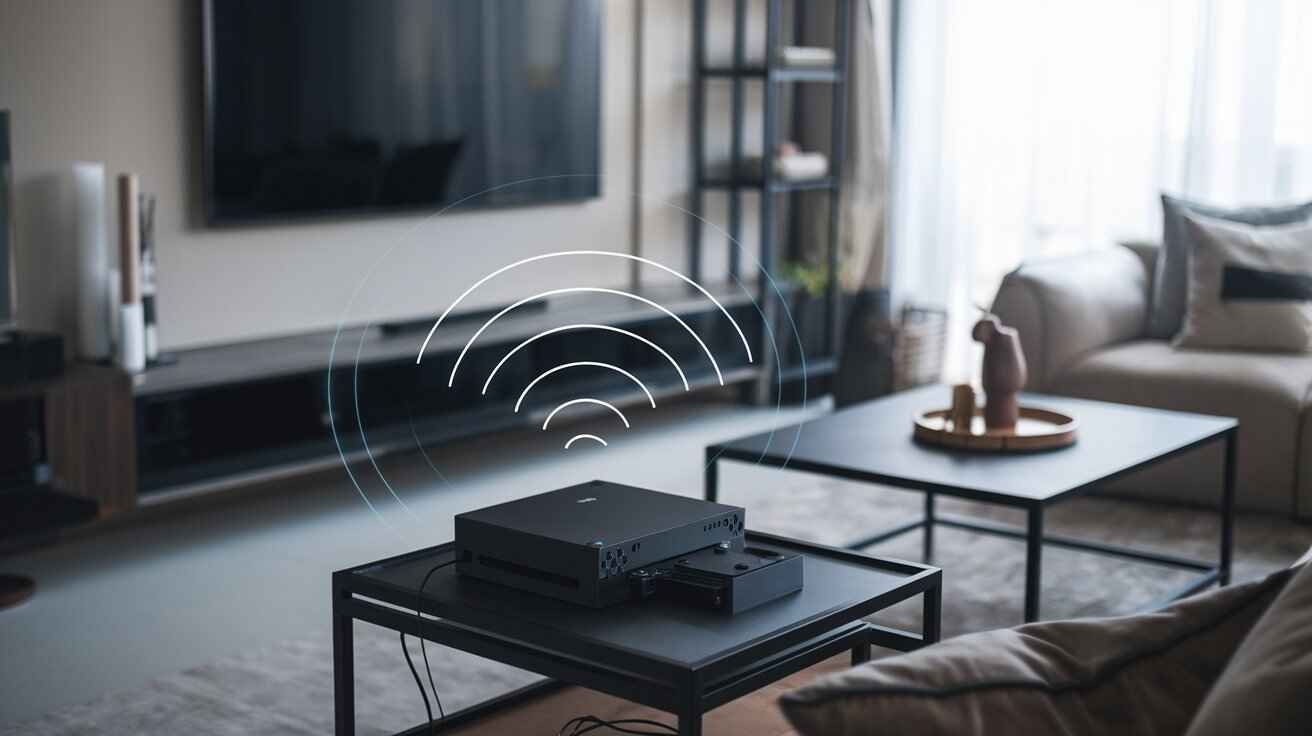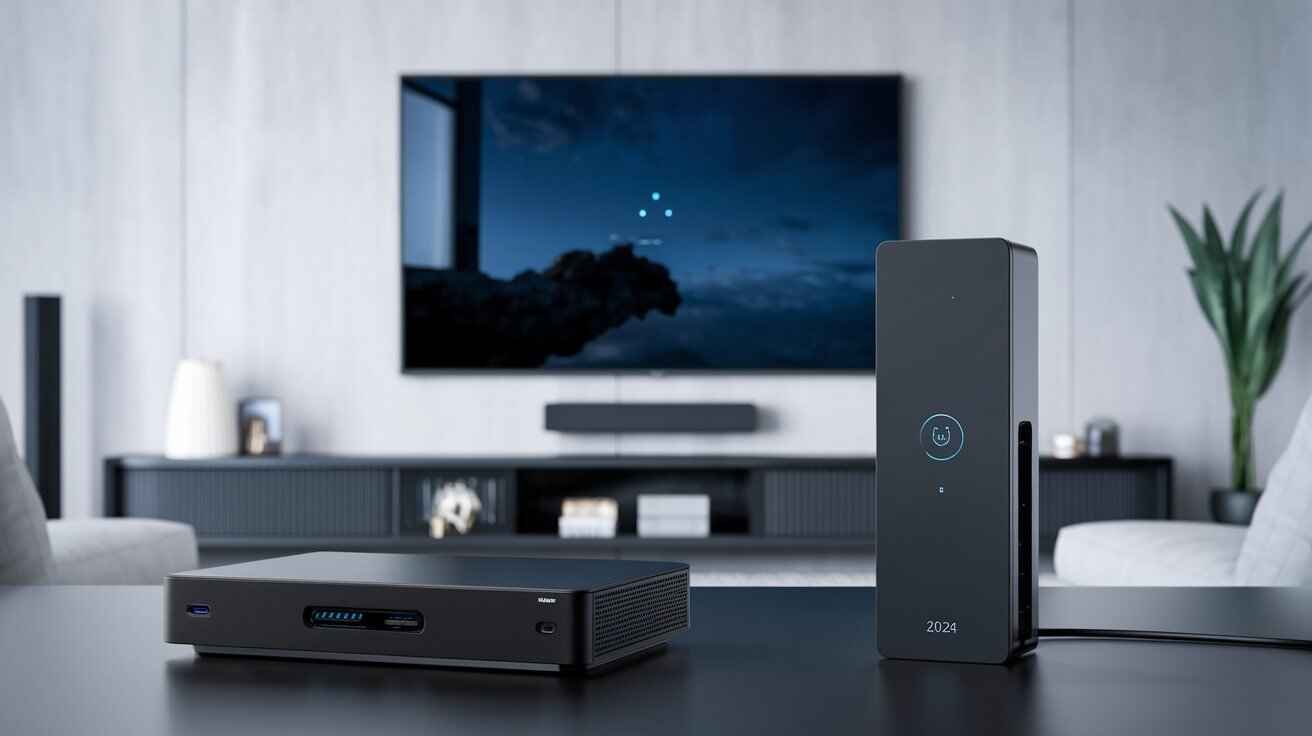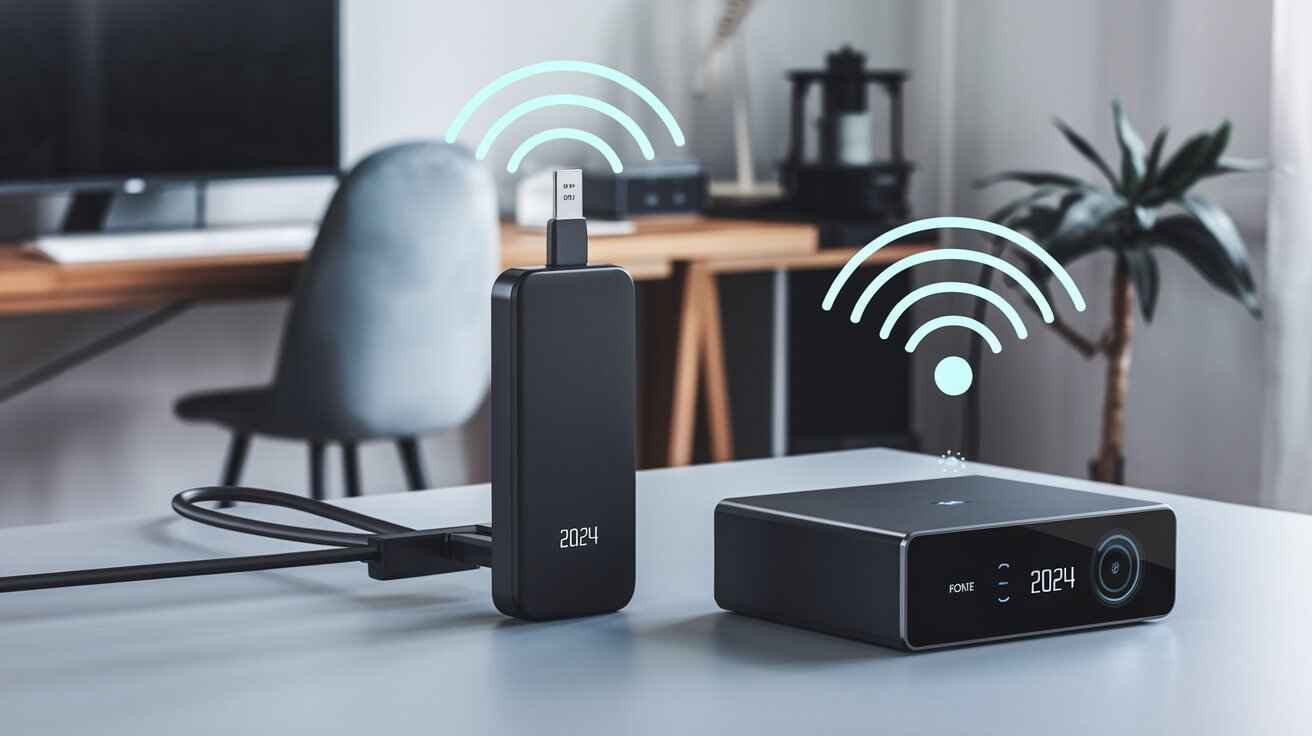In 2024, the importance of wireless technology has grown extremely essential as far as linking our devices is concerned. No more HDMI cables cluttering up our spaces and hampering our movements. In their place comes Wireless HDMI, which functions just like traditional HDMI cables but minus the physical wires needed.
Wireless HDMI is among the many topics we will cover here; next week we will focus on how it works, its advantages over others and some of the best products available today. Besides, this article also suggests other alternatives and what might be expected in future for wireless connectivity.
What is Wireless HDMI & How Does It Work?
Wireless HDMI allows you to send high-definition video and audio from a source device–such as a PC or gaming console–to a display device such as TV or projector without using an actual HDMI cable. Rather, they use a transmitter and receiver that communicate by radio waves usually on a 5GHz frequency range.
The transmitter connects to your source device while the receiver links to your display. Having both powered on and paired, they will create their own network that only they can access through wireless communication thus doing away with long wires due to complicated installations making it easy for home entertainment, gaming and presentation among others.
Benefits of Using Wireless HDMI for Seamless Collaboration
Wireless HDMI offers several advantages when it comes to seamless collaboration especially in environments where this is key:
Cable-Free Viewing: The main advantage of course is no more messy wires, creating less clutter and giving you a tidier setup whenever possible. This can be particularly useful in offices or home theaters where cables are unattractive (and unsafe).
Picture Quality: Wireless HDMI systems offer similar quality resolutions via traditional cables with most supporting between 1080p to 4K resulting in clear images with very little lag making them suitable for watching movies online or for game playing among other things.
Ease: Wireless HDMI allows you to have your source device anywhere with you. You can move your source around without having to worry about unplugging the cables or interfering with your display.
Multiple Device Connectivity: Many wireless HDMI systems allow a single receiver to be connected with several transmitters, which means you do not need to keep plugging and unplugging cables every time you want to switch devices.

Different Ways of Using Wireless HDMI Connections
Wireless HDMI is flexible and can be used in different scenarios:
Home Entertainment: If the media room needs cleaning up or if you’re creating a home theater, you can connect your television and media devices using Wireless HDMI instead of getting tangled in wires. This is especially useful when dealing with ceiling-mounted projectors.
Presentations & Conference Rooms: In an office environment, it is easier to make presentations by using Wireless HDMI. By this way, one could wirelessly connect their laptop or PC into a projector and start presenting while being at ease knowing that they are no longer tied by any cords hindering them from moving during their presentations.
Gaming: While gaming, the use of Wireless HDMI can help declutter your setup and get rid of wires around the console as well as TV set. Thus creating more space for games making it easy for one moving their console from room-to-room quickly enough.
Collaboration: Wireless HDMI in educational or corporate environments, enables multiple users to connect their devices into one display. This allows for a faster sharing of ideas and information that is more interactive.
Downsides to Using Wireless HDMI for Seamless Collaborations
Although there are numerous advantages of going wireless with HDMI, you should also look at some of the disadvantages such as:
Space Restrictions: The range of wireless HDMI systems is limited which ranges between 30-200 feet depending on the model in question. Meanwhile, they can interfere by either walls or furniture thus leading to connection loss or lags.
Cost: Normally, wireless HDMI kits are costlier than typical cables. While these may offer additional convenience, the prices could act as barriers for some users.
Latency Issues: However, latency is still a concern with contemporary wireless HDMI systems as it may lead to delayed response especially when gaming and other real time events are involved.
The Best Wireless HDMI Transmitters & Solutions
Here is a list of some preferred options when choosing a Wireless HDMI solution:
IOGEAR Wireless HDMI Transmitter & Receiver Kit: It’s an ideal option for people who need portable and easy-to-use systems since it’s compact too. For smaller spaces, the device supports 1080p resolution and operates within a 40-feet radius.
Nyrius Aries Pro Wireless HDMI Transmitter & Receiver: Nyrius Aries Pro is among premium alternatives available that allow video transmission in high-quality three dimensional format up to 100 feet away from each other. They are very well built ones known for stable performance that can be utilized both at home as well as professional level.
J-Tech Digital HDbitT Wireless HDMI Extender: This particular model has the longest range at 200 feet and thus perfect for larger rooms. It can transmit signals simultaneously on two displays, supporting 60Hz/1080p making it more versatile but bulkier than others.

Wireless HDMI Alternatives and Beyond
There are options other than Wireless HDMI if it does not meet your requirements:
Miracast, Chromecast, and Apple AirPlay: These three include native screen sharing options found on many new devices that can allow a user to wirelessly duplicate their screen although there may be restrictions on content support or compatibility with particular gadgets.
AirDroid Cast: A software that can be used for multiple device mirroring regardless of the operating system. It also enables remote screen sharing and allows up to five devices at once, making it one of the most versatile solutions in existence.
New Technology Updates
- Advanced Wireless Standards: New standards like Wi-Fi 6 increase distance while reducing latency.
- Improved Compression: Better video compression algorithms guarantee high quality content transfer with low bandwidth utilization.
- Smart Home Integration: Modern Wireless HDMI systems work well with smart home setups.
- AI Optimization: AI is what enhances signal strength while at the same time working to reduce interference dynamically.
The Future of Cable-Free Collaboration
Wireless technology is becoming more popular as we progress further into 2024. We cannot ignore how convenient wireless solutions such as wireless HDMI really are which could result in some even better advanced ones very soon. Therefore, what is being aimed for is a wireless and seamless collaboration that is not constrained by the type and make of the devices you want to use or their operating system.
Conclusion
In conclusion, despite its effectiveness in decluttering cables and enhancing collaboration, it is important to consider pros and cons before purchasing a Wireless HDMI product. For those who require more versatility AirDroid Cast among other alternatives could be preferable.
Wireless connectivity will define the future whether you choose Wireless HDMI or another wireless solution this means greater convenience, efficiency and freedom.
FAQs
Can I connect my HDMI wirelessly?
Yes by using Wireless HDMI Transmitter/ Receiver.
Is Wireless HDMI better than wired?
As convenient as wireless HDMI may be, wired hdmi usually works better because it is more stable with less delays.
How do I set up Wireless HDMI?
Plug the transmitter into your source device and connect the receiver to the display. Once powered on they should link automatically.
What are Wireless HDMI limitations?
There may be issues related to distance involved in these sorts of devices which could translate into extra costs or perhaps slower response times.
What are alternatives to Wireless HDMI?
Some alternatives include Miracast, Chromecast, Apple AirPlay or AirDroid Cast for streaming wirelessly videos.
Also Read: 20 Superior Family Tracking Apps: Life360 Alternatives






